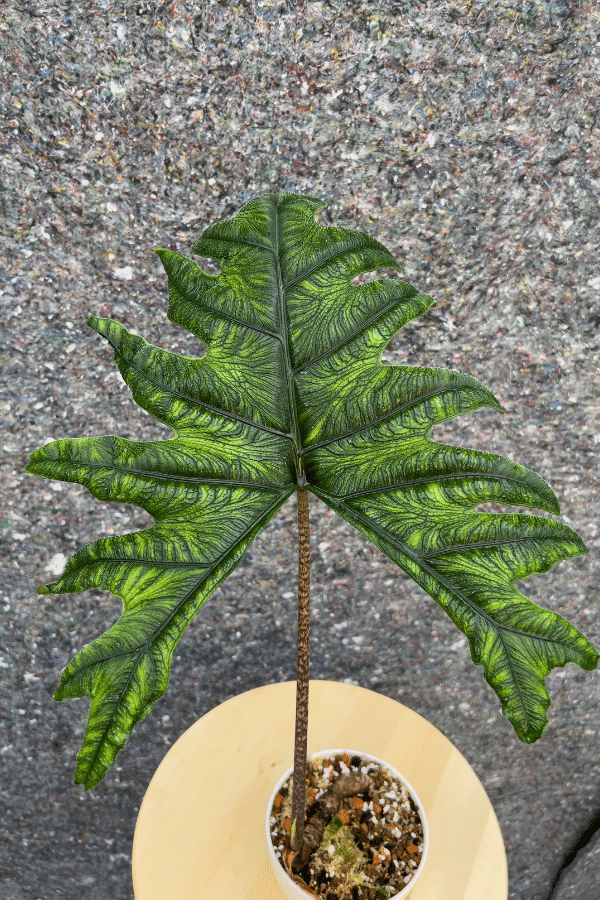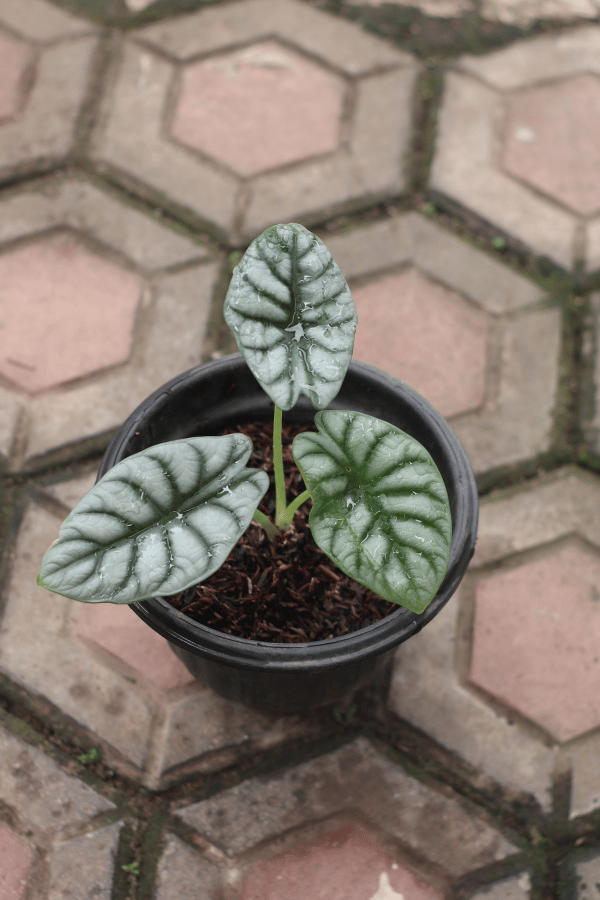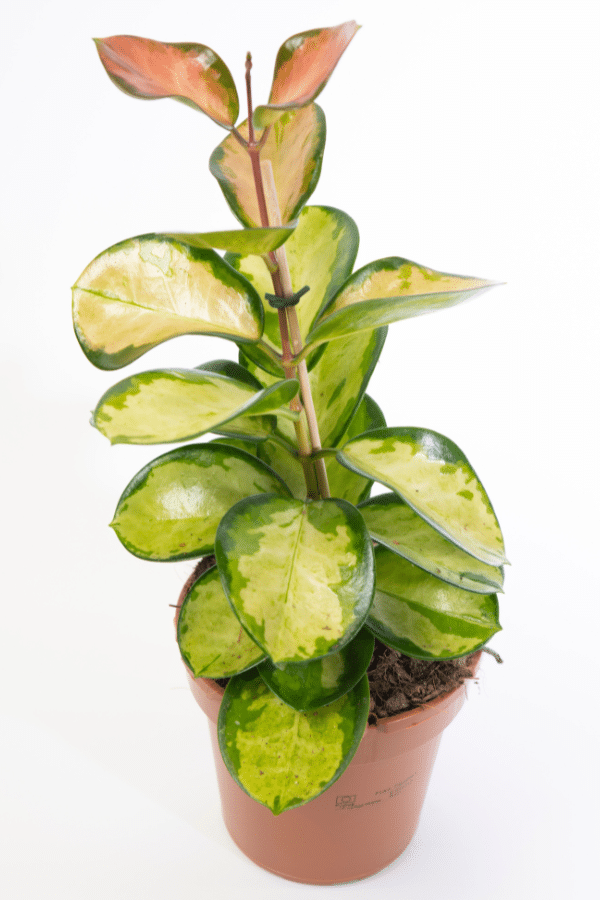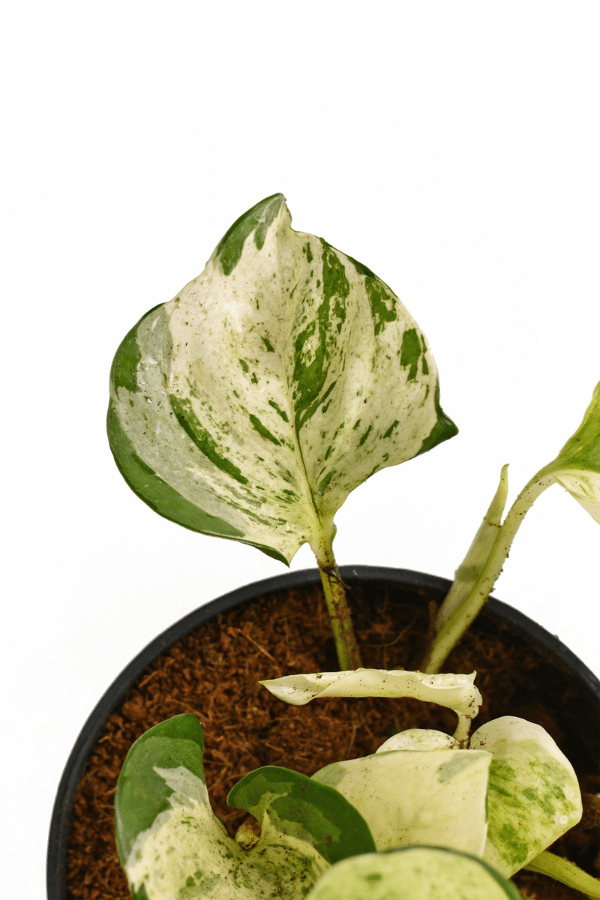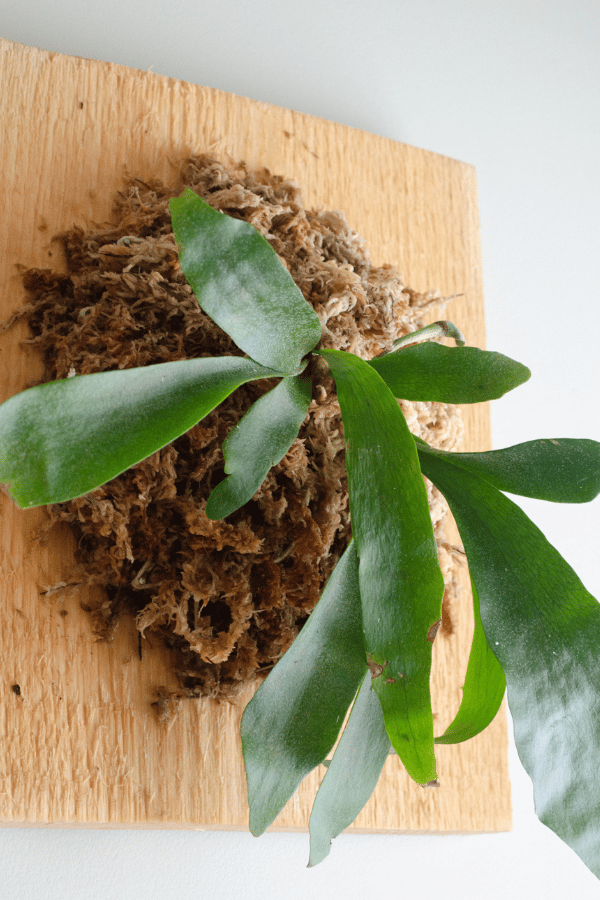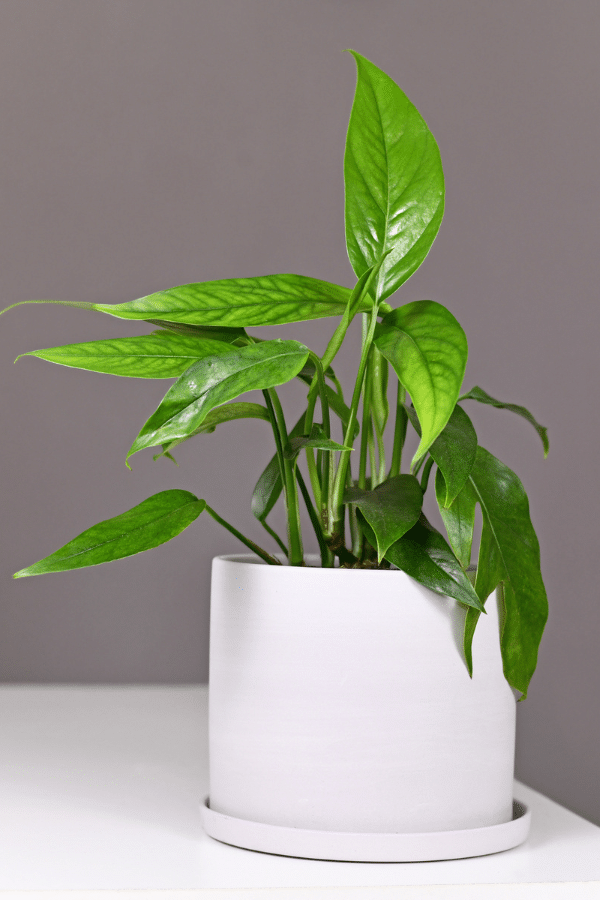Aluminum Plant
Scientific Name: Pilea Cadierei
Aluminum plant care is relatively easy as long as you can help to mimic its natural environment inside your home. If you want a houseplant that will stay relatively small, an Aluminum Plant may be for you.
To give this Pilea plant the best care, it requires well-draining soil, keeping the soil moist, providing it with bright light, temperatures ranging from 70-75F, and average humidity levels.
Quick Care Overview
| Common Name | Aluminum Plant, Watermelon Pilea |
| Scientific Name | Pilea Cadierei |
| Family | Urticaceae |
| Origin | China, Vietnam |
| Growth Rate | Medium |
| Identification | Dark green leaves with silver streaks that will trail |
| Height | Up to 4 feet tall |
| Soil | Well-draining soil |
| Water | Consistently moist soil |
| Temperature | 70-75F |
| Sunlight | Bright indirect light |
| Toxic to Cats & Dogs | No |
| Toxic to Humans | No |
| Pests | Mealybugs, spider mites |
| Diseases | Root rot, leaf spot, anthracnose, blights |
Below we will dive deep into this Aluminum Plant care guide.
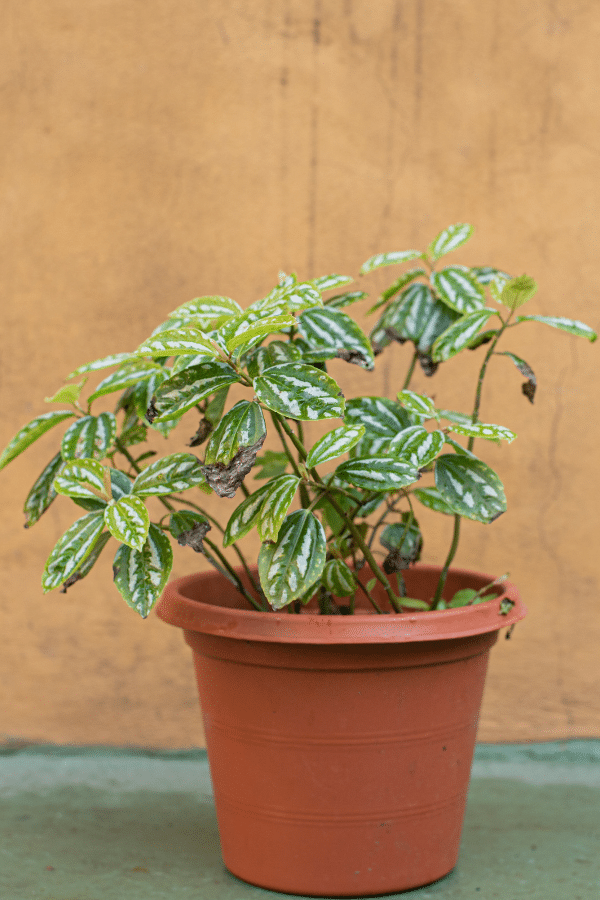
Aluminum Plant History
Pilea Cadierei, otherwise known as the Watermelon Pilea or Aluminum Plant, is a gorgeous, unique plant with foliage that appears to have been brushed with aluminum paint. Coming from the nettle family of Urticaceae, native to China and Vietnam, the Watermelon Pilea has lovely silver streaks found amongst dark green foliage that has made this plant an American favorite. French botanists first introduced this evergreen perennial in 1928 to the West. As a potted houseplant, Pilea Cadierei is perfect for beginners.
Aluminum Plant Identification
The aluminum plant does not get very large. It has a grouped cluster of stems that produce dark green leaves with silver streaks and has a spreading habit. Occasionally, Pilea Cadierei will produce tiny white flowers.
Aluminum Plant Growth Facts
Pilea Cadierei is available in several heights ranging from dwarf varieties remaining under half a foot tall to other types reaching several feet tall and having a spreading habit. Growth may be maintained to the perfect size by pruning. However, this plant has a very rapid growth habit and has been known to burst through pots.
How Big Does an Aluminum Plant Get?
This plant may grow up to 4 feet tall.
Aluminum Plant Care
Being a rapid grower, it is essential to repot this plant annually. Aside from regularly accommodating its rapid growth, this plant is very easy to care for.
Aluminum Plant Soil
For best Aluminum Plant care, this plant likes to be grown in a well-draining growing medium that is rich in organic matter and has good drainage. To aid in a well-draining soil, a sandy soil mixture would be beneficial or adding in some perlite. A commercial quality standard potting mix will work perfectly for this plant.
Aluminum Plant Fertilizer
The Pilea Cadierei will benefit from a regular monthly feeding during the warm growing season of spring and summer. Utilize a balanced, water-soluble fertilizer and ensure that you follow all label instructions. Do not feed during the winter, as it is not needed, and overfertilizing may cause damage to the plant.
Aluminum Plant Watering
During the growing season of spring and summer, Pilea Cadierei will like to remain evenly and consistently moist but not oversaturated. Compared to other houseplants, the Aluminum Plant often requires more water. You should rewater your aluminum plant after the top quarter inch of soil has dried. However, during the fall and winter, watering frequency should be reduced. This plant also enjoys being occasionally misted.
Aluminum Plant Light Requirements
The Aluminum Plant likes to receive bright indirect sunlight, such as from an eastern or western window. This plant should receive no less than four hours of sunlight each day. However, it is essential to note that this Pilea should not be kept in direct sun as too much direct sunlight will lead to sunburn and browning of the leaves.
Aluminum Plant Temperature & Humidity
When grown as an indoor houseplant, the Aluminum Plant will do just fine when grown under average household temperatures with ideal temperatures being 70-75F. However, Pilea Cadierei does not enjoy large temperature fluctuations and should not be kept near air vents, heaters, cold windows, AC units, or drafts. While this plant will tolerate average household humidity, to encourage lush foliar growth, your plant will benefit from high humidity. To provide more humidity to your plant try misting, adding a pebble tray, a humidifier, or grow it in a well-lit bathroom.
Repotting Aluminum Plant
Repotting of your Aluminum Plant should be done in early spring before rapid new growth. Select a container that is 1” larger than the previous container, repot, refresh with new soil, tamp, and water thoroughly. Your newly potted plant should be placed in indirect light. Potting should be done annually or whenever roots are seen sticking out of drainage holes.
Aluminum Plant Maintenance & Pruning
Leggy growth should be pinched back periodically to encourage a bushier, rounded growth formation. Consistent rotation of the plant’s container towards the source of sunlight should encourage uniform growth. Discolored, diseased, or dead leaves may be removed periodically as needed.
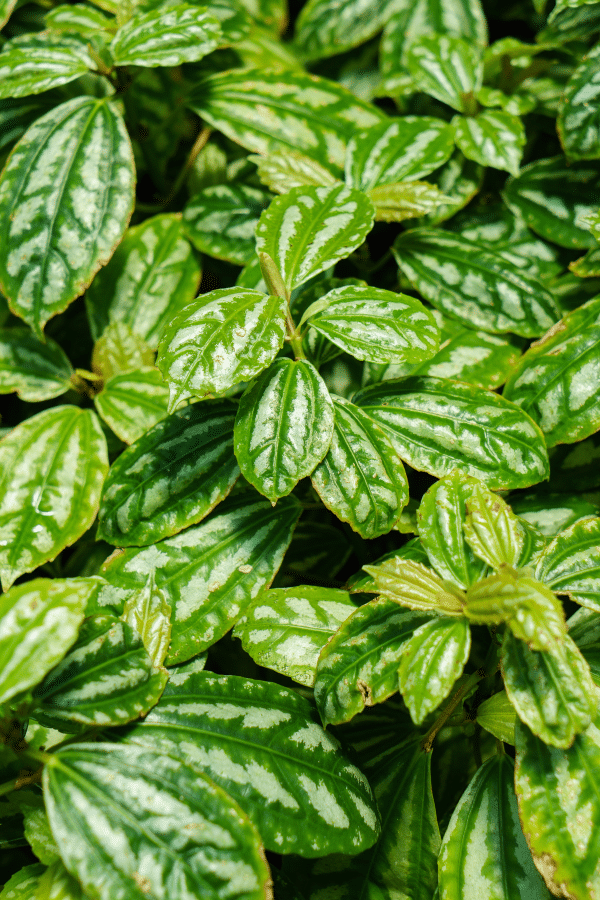
Aluminum Plant Propagation
The Aluminum Plant is easily propagated from stem tip cuttings. Stem cuttings should be taken in early spring. Select new, healthy stem tips to clip for your cuttings. After taking your cutting(s), remove lower leaves from the stem, except the top couple of leaves. Insert the cutting into fresh potting soil and water thoroughly. It is essential that you keep your cuttings moist until rooted. A plastic bag may be placed over the container to trap in humidity and moisture and encourage rooting.
Aluminum Plant Toxicity
Considered non-toxic to humans and pets, the Aluminum Plant is pet-friendly and kid-friendly.
Toxicity to Humans
Pilea Cadierei is considered non-toxic to humans. However, they should not be ingested.
Toxicity to Cats & Dogs
Luckily, Pilea Cadierei is considered non-toxic to pets and is safe for them to be around.
Aluminum Plant Problems
Aluminum Plant Leaves Turning Yellow
When foliage of the Watermelon Pilea turns yellow, it is often due to overwatering or improper lighting.
Aluminum Plant Leaves Turning Brown
Browning of the leaves may be due to overwatering, overexposure to sun, or to disease issues.
Aluminum Plant Diseases
Pilea Plants are known to be susceptible to several plant diseases such as leaf spot, root rot, anthracnose, and blights. Luckily, many of these diseases may be prevented by ensuring that you are not overwatering your plant. However, in the event that your Aluminum Plant has been affected by any of these plant diseases, you may treat it with a fungicide.
Aluminum Plant Pests
The largest pest problems the Aluminum Plant will face is from mealybugs and spider mites. These may be treated with a pesticide such as insecticidal soap or neem oil.
FAQ
Why Is It Called Aluminum Plant?
Pilea Cadierei was given the name, Aluminum Plant because the plant looks like it was painted with aluminum paint.
Can Aluminum Plant Grow In Water?
When you take cuttings off the Aluminum plant and place them in water for propagation, you want to wait until the roots have been established before planting in soil. They can grow in water just fine and for a long time.
Why Is My Aluminum Plant Losing Leaves?
Aluminum Plant loses leaves due to the plant being overwatered. Let the soil dry out to prevent more leaf drop and if needed, repot with new fresh soil.

